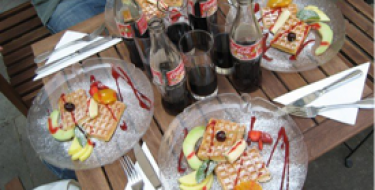Social Media as Social Networking
I recently started reading Gary Vaynerchuk’s newest book, The Thank You Economy. Only five pages into the book he has a section entitled “Social Media Is More Than Media...” that stopped me in my tracks.
If there is one thing that I wish every business owner knew about social media, this quotation would sum it up:
“For the record, I dislike the term “social media.” It is a misnomer that has caused a boatload of confusion. It has led managers, marketers, CEOs, and CMOs to think they can use social networking sites to spread their message the same way they use traditional media platforms like print, radio, television, or outdoor, and expect similar results and returns. But what we call social media is not media, nor is it even a platform. It is a massive cultural shift that has profoundly affected the way society uses the greatest platform ever invented, the Internet.”
Vaynerchuck is right that social media isn’t media. We would probably be better served to return to the term “social networking.” Networking is a much better description of what we as marketers should be doing on LinkedIn, Twitter, and Facebook. Media is a shouting match among marketers, but networking is about relationship building.
Social Media as Networking
Let’s consider social networking from the perspective of your local Chamber of Commerce mixer. You don’t walk in the door and start yelling over and over again “I’m Jim Smith, from Smith Plumbing and we are the best plumbers in San Antonio. Call us today!” But how many people post a message just like that nearly every day on Twitter? If social media is really more like networking then the same strategies that help you generate business at a networking event can be translated into an effective social networking strategy.
Show up! Every time!
You know that in order to make a name for yourself at the Chamber half of the battle is being there every time there is an event. In social media this means posting as often as possible. Depending on the platform that may mean multiple times a day or once a week. Every post doesn’t need to be a work of art, just post something of value to your readers.
Have Meaningful Conversations
After showing up at a network event, the next step is to have meaningful conversations with people. That usually means talking with them about things they are interested in or issues they are facing. It’s the same thing when you post and article on your blog. Don’t talk about how great your services are and what you can do for your reader. Instead talk about an experience you had with a client last week, what challenge they faced, and how you helped them solve it. Don’t you think many of your readers are going through the same thing right now that your client experienced last week?
Patience and Consistency
Most businesses who speak badly of their experience with a particular networking group never stayed around long enough to reap the rewards of their effort. Social networking requires the same level of patience to become successful. It may take months or even years to build up a reputation in a competitive industry. Stick with it.
A business owner who applies these principles will build up a reputation as an expert advisor who cares about others and is always there when you need him. If you where seen that way by your potential customers how much business do you think would walk in your door each year? Probably more than you current operation can handle!
So next time you start to use Twitter to "spread your message"... don’t! Instead think about your last Chamber of Commerce event and find a way to start a meaningful conversation with that post.
MONTHLY MARKETING INSIGHTS.
Get thought-provoking and actionable insights to improve how your firm makes a connection with your customers.





LEAVE A COMMENT